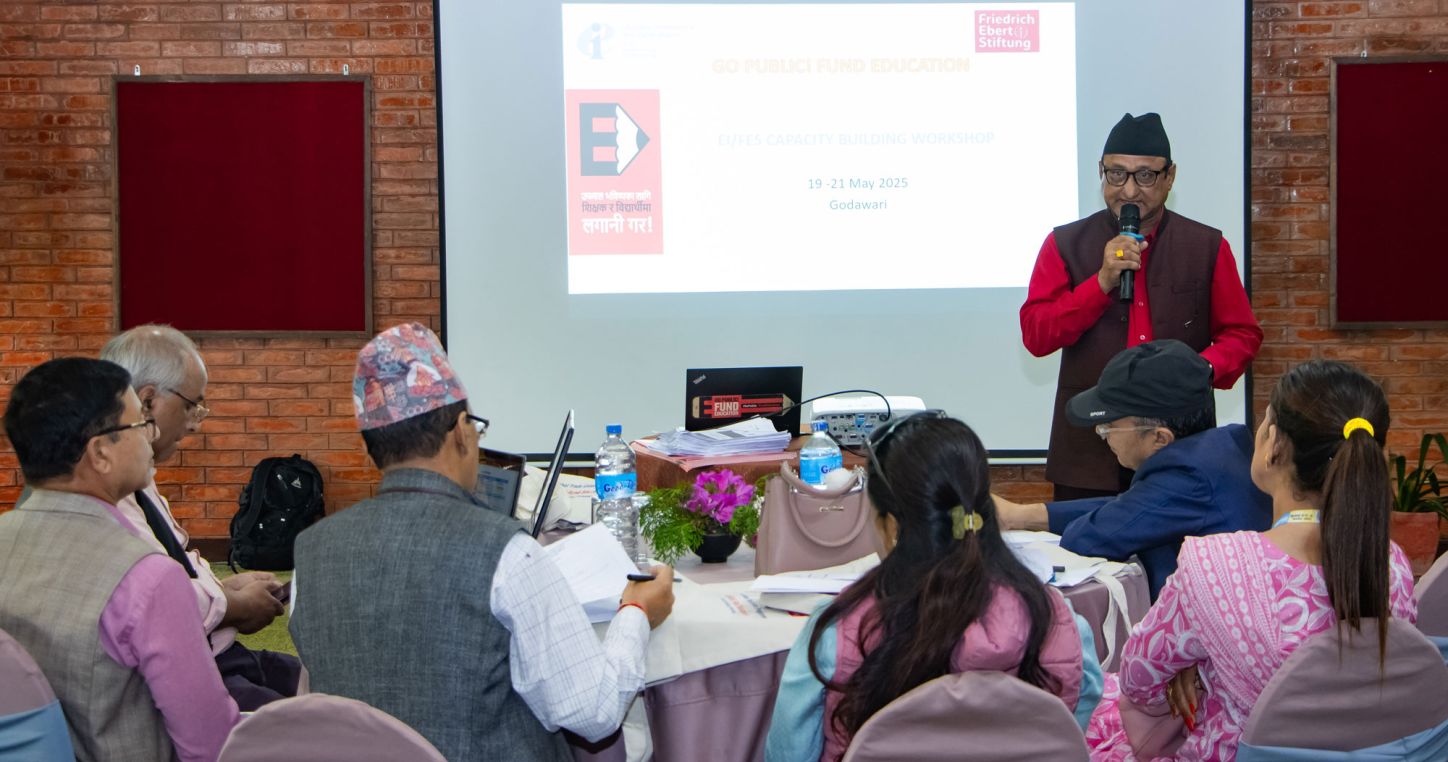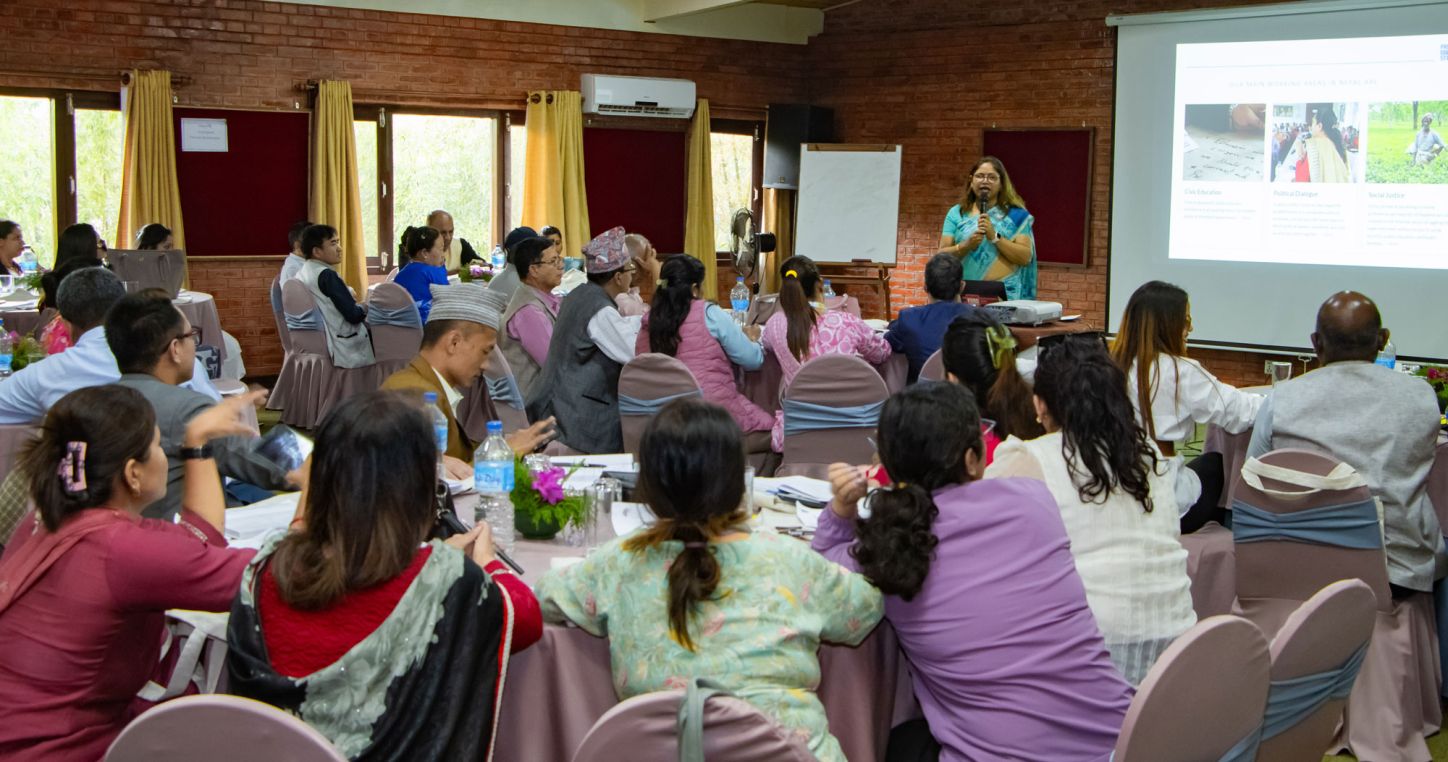
Billions more for education. Historic win for teachers, support personnel, and every child in Nepal
Building on a historic and hard-fought victory at national level that led the government to commit to increase education funding by nearly 15 billion Nepali rupees (around 96 million euros), 36 prominent union leaders from across Nepal convened to launch the next phase of their advocacy, taking the Go Public! Fund Education campaign to every corner of the country.
This union led victory came after 90 days of unrelenting mobilization and 29 days of peaceful yet powerful street protests that captured the nation’s attention.
Leaders from all Education International (EI) national member organizations—the Institutional School Teachers’ Union (ISTU), the Nepal National Teachers’ Association (NNTA), the Nepal Teachers’ Association (NTA) and the Nepal School Employees Council (NSEC)—met May 19th – 21st to plan the next phase of the campaign.


A win not just for teachers, but for every child in Nepal
EI and the Friedrich-Ebert-Stiftung (FES) convened this strategic gathering. Opening the event, Anand Singh, EI Asia-Pacific Regional Director, stated: “You have shown the kind of resolve that moves nations. This is not just a win for teachers—it is a win for every child in Nepal. Your campaign has increased education funding by billions. Now, we must take this fire to the local level.”

FES Country Representative Ms. Natalia Figge commanded the “unyielding spirit and inclusivity of the movement,” adding: “This agreement was not given—it was earned through grit, determination, and unity since 2021. The strong presence and leadership of women in these protests is a beacon for trade union movements worldwide.”
Participants dived deep into planning local-level campaigns to tackle the pressing teacher shortages, education funding gaps, and systemic challenges plaguing Nepal’s public and private education systems. Drawing inspiration from the UN Recommendations on the Teaching Profession, union leaders committed to ensuring that these guidelines shape local government policies.

Showing the power of mass mobilization, community solidarity and peaceful protests
Reflecting on the success of the national campaign, participants emphasized the power of mass mobilization, community solidarity, and disciplined protest. One unionist recalled that “thousands of teachers poured into the streets of Kathmandu—but we left them cleaner than we found them. Even the Mayor praised us.”


The union leaders unveiled 18 grassroots campaign plans aiming to raise over 18 million Nepali rupees in local education funding. The focus will begin in the eastern province, with campaigns expanding across all seven national provinces.

ISTU Co-Chair Moti Ram Phuyal called for continued vigilance: “We must not rest. Private school teachers are still waiting for justice. The new School Education Act must address their rights and dignity.”
Bishu Prasad Bhandari, President of NNTA, pointed to the next frontier: “Local governments hold the keys. We must build social dialogue, secure funding, and ensure maternity leave and support systems in all 753 local governments.”
Som Nath Giri, President of NTA, emphasized the importance of unity and strategy: “We held hundreds of meetings—with our members and the government. Without our strike fund, we could not have kept the protests running smoothly and humanely. This was a campaign powered by the people.”
NSEC President Ganga Ram Tiwari also reminded everyone that achieved agreements are only the beginning: “Our names were not even in the first agreement. But we didn’t give up—and now school employees have won paid leave too. This struggle continues.”
This moment marks a turning point in Nepal’s education history. Singh highlighted that from the capital to the classrooms of rural Nepal, the message is clear: “Teachers are rising—and they are not backing down until every child has access to quality education and every educator is treated with dignity.”